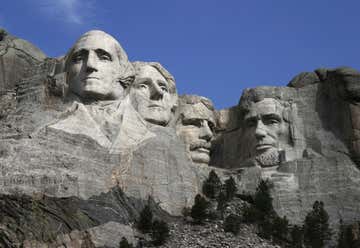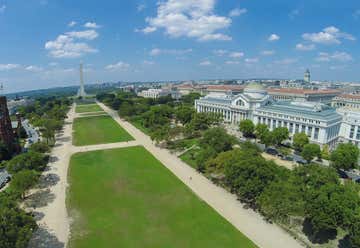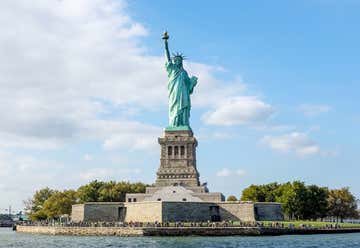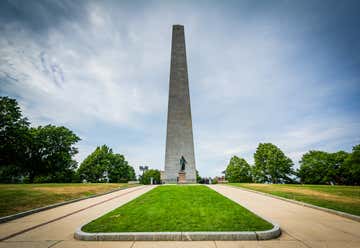Americans love to memorialize their history with impressive monuments. Sometimes we preserve an artifact, build a statue, or even carve an entire mountain out of a sense of national pride and sentimentality. Regardless of its form, many of our most impressive monuments and memorials have become icons in their own right. Here are just a few that deserve a place on everyone's bucket list!
Mount Rushmore is one of the world's most iconic monuments. It's also featured prominently in classic films such as North by Northwest. Rumors about treasures hidden within it have run wild for years. It's been parodied a hundred times over. However, what's undeniable is that it's seriously one amazing feat of engineering and creativity. Originally conceived as a way to generate tourism in South Dakota, historian Doane Robinson initially had intended Western heroes, such as Lewis and Clark, to be depicted. But artist Gutzon Borglum wanted a more national focus, and they decided on four American presidents: George Washington, Abraham Lincoln, Thomas Jefferson, and Theodore Roosevelt. Borglum, along with 400 workers, began constructing the 60-foot carving in 1923. Sadly, Borglum died in March of 1941, before the project was complete. His son Lincoln Borglum continued his father's work and finally finished the epic monument in October of that year. Today it attracts more than 2 million visitors every year!
Best known for its famous Gateway Arch in St. Louis, the Jefferson National Expansion Memorial commemorates the Louisiana Purchase, westward expansion, and the debate over slavery, which began in Missouri with the Dred Scott case. The arch is known as the Gateway to the West, and is still the tallest structure in Missouri. Visitors can even take a tram to the observation deck at the top of the arch! The memorial itself is a tribute to Thomas Jefferson (who, at the time when the idea was pitched, had no national memorial in his honor), in memory of one of his greatest triumphs, the Louisiana Purchase. The concept began in the 1930s, but construction didn’t begin until the 60s. The Arch has since become a definitive icon for St. Louis. It's currently one of the most visited places in the world!
You won’t find more beautiful and important monuments and memorials clustered together in one place than on the National Mall in Washington D.C. The Washington Monument, which still holds the record of tallest stone structure in the world, is there and directly to the west lies the Reflecting Pool and the Lincoln Memorial, a graceful monument designed in the style of a Greek temple. Right next door you'll find the sobering Vietnam Veterans Memorial as well as the National World War II Memorial. While you’re there, don’t forget to go around the Tidal Basin to the Thomas Jefferson Memorial as well. And of course the United States Capitol Building and the The White House are equally iconic!
The Liberty Bell began its illustrious career hanging in the steeple of the Pennsylvania State House in Philadelphia in 1752. It's inscribed with the words “Proclaim LIBERTY throughout all the land unto all the inhabitants thereof,” which is a biblical reference. The bell was rung to signal legislative meetings and to call Philadelphia’s citizens to public meetings. It didn’t become famous until a local legend about it began to circulate: in it, an old man sat sadly by it, not believing that the American colonists would have the courage to declare independence from Britain. But his hope was restored when a young boy arrived to tell him to ring the bell because Congress had declared independence. How much of this story is based on truth is unknown, but it was printed in school primers as fact and the bell came to be a large part of the culture in Philadelphia. The origins of its famous crack are also unknown, but legend has it that it cracked when the bell was rung upon the death of John Marshall, US Chief Justice in 1835. It's been a rallying symbol for several civil rights activist groups, including abolitionists and suffragettes. It's also toured all over the country, and can now be seen in Liberty Hall in Philadelphia.
There's really no image more symbolic of the United States as a whole than the Statue of Liberty. It was the first thing immigrants would see upon arriving in America for the first time, and became a symbol of hope for freedom and the American dream. It was a gift from France, inspired at least in part by the Union Victory in the American Civil War, and the end of slavery. It was designed by Frédéric Auguste Bartholdi and sculpted by Gustave Eiffel. France would provide the statue itself, while the US would provide the site and the pedestal. The site was chosen without too much difficulty, but funds for the pedestal quickly ran out. Joseph Pulitzer (yes, that Pulitzer) of the New York World publication, started a public fundraiser and promised to print every contributors name in his paper, no matter how small the contribution. The resulting funds that poured in were accompanied by sweet notes such as: “the money we saved to go to the circus with” from a group of children sending in their dollar. It was finally dedicated in 1886 and has presided over New York City ever since.
The Bunker Hill Monument commemorates the Battle of Bunker Hill, which was the first major battle of the American Revolution. 1,200 American troops rallied to prevent British soldiers from taking control of Boston Harbor. Although the colonists ultimately lost the battle, they inflicted so much damage against the better-trained and better-equipped British soldiers that they inspired hope amongst American rebels everywhere. As British General Clinton would later write in his diary, "A few more such victories would have shortly put an end to British dominion in America." Although Boston locals are quick to point out that most of the fighting actually took place on the adjacent Breed’s Hill, the battle became known as “The Battle of Bunker Hill”, and so that's where the monument stands today. A 221-foot granite obelisk stands in memory of the bloody battle. After you’ve visited, be sure to follow the Freedom Trail through Boston to see other significant sites from the American Revolution.
From important historic sites to moving memorials, these National Monuments preserve some pretty incredible and unique American locations that are perfect for exploring, especially while on a road trip!







